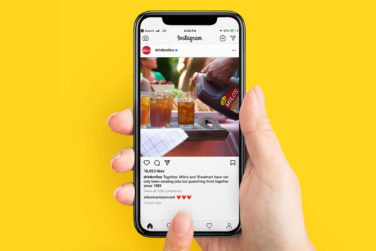No one has more on their plate or is dealing with as much stress as today’s healthcare professionals. They are on the front lines of the COVID-19 pandemic, and they are concerned. In a “COVID-19 HCP Survey” published by Fingerpaint, 59% percent of HCPs were worried about their patients not being diagnosed in a timely manner, 58% believe their patients will not be able to obtain previously prescribed in-office/outpatient care, and 53% don’t think their patients have the ability to use telemedicine and will not be able to refill their medications. They also believe this pandemic will have a long-term impact on their practices with 59% saying they won’t feel more hopeful about the current situation for at least two to six months.
Yet, this is not a time for life sciences companies to pull back their engagement. According to CMI/Compas’ report, “What HCPs Want and Need from Life Sciences Companies During the COVID-19 Pandemic,” 86% of all HCP respondents said it is appropriate for the pharma industry to provide information related to their products to professionals during this pandemic—with 59% in strong agreement.
For the most part, the report says HCPs are interested in COVID-19 related information for themselves, as well as info they can share with patients. Most specialties are also interested in telehealth resources, access to virtual sample closets in lieu of sales reps, patient assistance/savings card information, and product safety/efficacy information. Meanwhile, commercial insurance plan coverage information and product dosing/monograph information were deemed the least helpful. Of course, HCPs want to receive any pharma-sponsored information digitally at this time, with most preferring to get this information from medical websites, online journals, medical apps, and emails from publishers.
Simulating In-Person Experiences
Even sales reps are still valued at a time when they can’t be physically present. As Jay Zaun, Director of Technology, Dudnyk points out, some statistics currently show that 85% of HCPs want to meet with sales reps online. But Zaun warns that HCPs also have higher expectations for these digital engagements.
“Because the HCP audience is becoming more digitally savvy and more comfortable with a variety of devices and platforms, marketers and technologists will need to provide guidance on content creation, UX design, and presentation tools that provide the ability to utilize regulatory-approved marketing pieces in both live and remote settings,” Zaun says. “Choosing the correct presentation tool and factoring in varying levels of digital capability into UX design will have a direct effect on the likelihood of your marketing materials being used by your intended audience.”
This is also true when developing an online platform alternative to the typical in-person peer-to-peer medical education program, which is one of the most trusted channels for HCP education.
“The key is to emulate the same level of engagement and interactivity online,” says Jessica Cini, SVP of Client Services and Business Development, Health & Wellness Partners, LLC. “These platforms can provide a variety of formats to serve as peer-to-peer education while meeting the needs of different learners and the way they digest information. They can range from expert-led slide presentations to five-minute fast facts or 45-minute webinar lecture series. On-demand content offers educational power to learners—the material is available at their fingertips, allowing them to learn new information on their own time and at their own pace.”
Which Digital Channels to Use
But for pharma marketers to be successful they will need to take a multi-level, multi-tactical approach because each HCP is going to have their own preferences for how, where, and when to receive information.
“Targeted email that is customized for the specialty of a doctor is still relevant,” says Nathan Lucht, President & CEO, Rx EDGE Media Network. “Likewise, HCP-targeted digital messages on devices with educational content are another effective way to break through. Other practitioners will prefer printed/physical materials they can hold and keep handy for reference.”
And for those HCPs who value peer-to-peer engagement, more and more are doing so via social media. One example, according to Kara Stephens-Weaver, Associate Director, Professional Practice, Pascale, is a very active radiology community that has emerged on Twitter, with physicians using the platform to share learnings and experiences.
“Additionally, we’ve seen huge growth in HCP-facing podcasts, which allow busy physicians to take in new information on their commutes, as well as blogs, which provide condensed, easy-to-read perspectives and information,” Stephens-Weaver adds. “Longer form peer-to-peer content such as peer-reviewed studies and trade media articles remain a vital method of HCP education. But with that in mind, digital- and social media-based channels can be used to share tidbits and snippets of peer-to-peer educational content, giving readers a taste of the info and encouraging them to read more.”
With online readership increasing and more HCPs sourcing information digitally, marketers have a growing opportunity to address them immediately with informative, programmatic digital ads.
“Since COVID-19 emerged, we’ve seen an increasing number of opportunities to market to HCPs in both professional and non-professional environments,” explains Chris Paquette, Co-Founder and CEO, DeepIntent. “Taking advantage of both endemic and non-endemic (e.g., news, lifestyle) placements is critical to creating a ‘surround sound’ effect that allows for timely and impactful messaging. Programmatic is the perfect tool to do this in a highly precise and efficient way at massive scale.”
Mobile is also a key platform that marketers shouldn’t ignore.
“While I was a pharmacist, I didn’t have internet access at work,” says Nicole Dark, PharmD, Associate Medical Director, Digitas Health. “Mobile apps were life-savers when I wanted to use clinical databases such as Lexicomp, Micromedex, and UpToDate. I quickly found myself using my phone more frequently for my informational needs, which is a habit a lot of pharmacists have adapted to. Marketing mobile-friendly interfaces that are easy to operate will be key to catching the attention of today’s new generation of HCPs.”
But ultimately, right now the message matters more than the channel. That’s according to Jonathan Pepe, VP and Senior Director of Engagement Strategy, The Bloc, who adds that pharma needs to be a partner over a promoter during this pandemic.
“We need to deliver channel-agnostic programs that communicate a narrative arc bespoke to each customer’s needs, and do it in a way that is timely, relevant, and actionable,” Pepe says. “Channel preferences are always going to vary person to person, day to day, but a thorough understanding of your customers never fails to steer you in the right direction. Attention isn’t bought, it’s earned. And your channel? It’s only as good as your message.”









